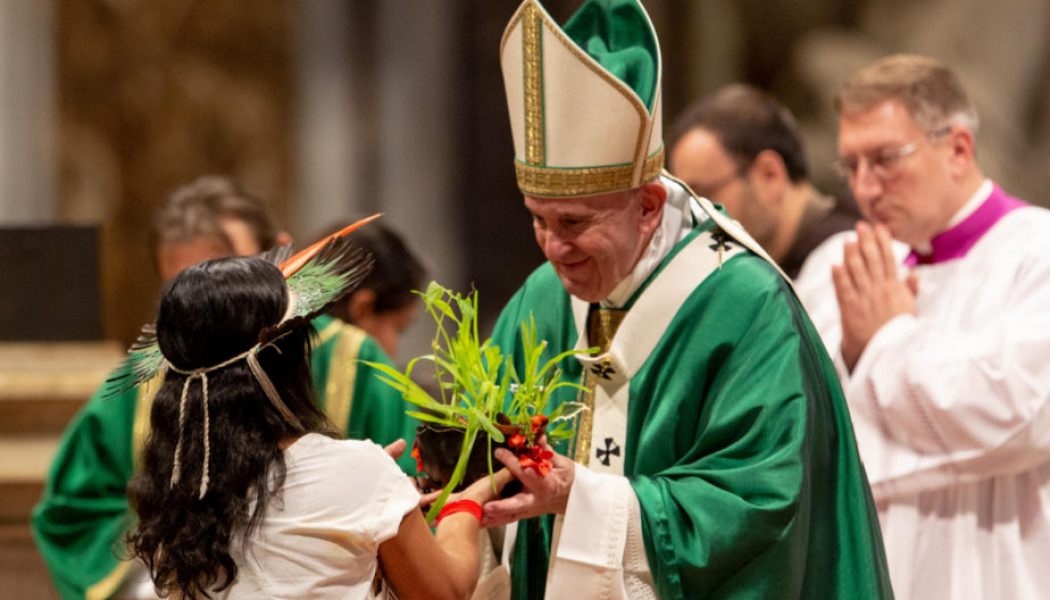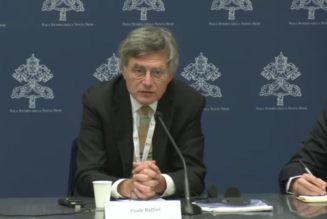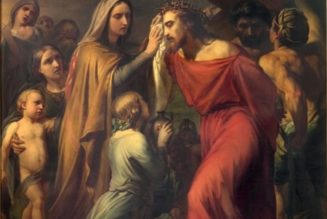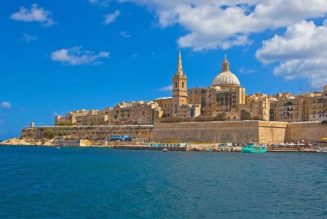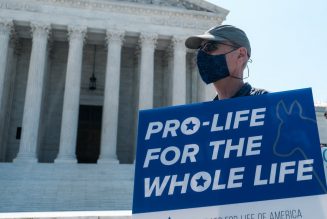
Given that he was one of the principal planners and prominent leaders of last October’s special Synod on Amazonia, Cardinal Claudio Hummes, OFM, is understandably enthusiastic about the results of that exercise. Indeed, the enthusiasm of the emeritus archbishop of São Paulo and prefect emeritus of the Vatican’s Congregation for the Clergy seems virtually boundless: Cardinal Hummes recently claimed that “The Synod for the Amazon was historic; no previous synod was as synodal and reform-oriented as this one.” High praise indeed.
But is such fulsome applause really warranted? How does the cardinal’s claim measure up against the historical record? Not very well, I fear. Which suggests the possibility that Cardinal Hummes is reimagining the recent Catholic past in order to make certain points about the Catholic present and the Catholic future.
The 1974 Synod on evangelization was a donnybrook, reflecting the turbulence in the Church a decade after the Second Vatican Council. The synod fathers couldn’t agree on a final report, so they handed the synod’s materials to Pope Paul VI with the request that he do something. Pope Paul responded with the great apostolic exhortation Evangelii Nuntiandi (Announcing the Gospel). It was Paul VI’s last pastoral testament to the Church and the first summons to what John Paul II would call the “New Evangelization:” the grand strategy that animates the living parts of the world Church today.
Was the Amazonian Synod more “historic” than that?
The 1990 Synod debated priestly formation and seminary reform. The propositions adopted by the synod fathers helped shape John Paul II’s 1992 apostolic exhortation, Pastores Dabo Vobis (I Shall Give you Shepherds). Where it was taken seriously (as in the United States), that exhortation helped apply the brakes to the silly season in seminaries and laid the foundation for the reformed seminaries of today.
Was the Amazonian Synod more “reform-oriented” than that?
The 1994 Synod explored the renewal of consecrated religious life in light of Vatican II’s teaching on the subject. Its reflections helped John Paul II write the 1996 apostolic exhortation, Vita Consecrata (The Consecrated Life). Throughout the world Church today, religious communities of men and women that embraced Vita Consecrata are vibrant and making real contributions to the New Evangelization; those that ignored Vita Consecrata are moribund or dying.
Was the Amazonian Synod more “historic” than that?
And then there was the special Synod of 1985, which met on the 20th anniversary of Vatican II’s fourth and final session to explore what had gone right, and what had gone not-so right, in implementing the Council. Its final report’s description of the Church as a communion of disciples in mission provided the thread that wove the 16 documents of Vatican II into a coherent, compelling tapestry of Catholic faith. Like Evangelii Nuntiandi, the special Synod of 1985 was a crucial moment in the journey from Vatican II – the council Pope John XXIII called to give the Church new missionary energy – to the New Evangelization.
Was the Amazonian Synod more “historic” and “reform-oriented” than that?
As for the Amazonian Synod itself, others who were in Rome last October may remember the proceedings somewhat differently than Cardinal Hummes evidently does.
Some will remember that the roster of synod participants reflected a narrow bandwidth of Catholic opinion. Some will remember the rather stifling atmosphere within the Synod Hall, which reinforced the impression created by the synod’s managers that (to vary Orwell) some viewpoints were more equal than other viewpoints. Some will remember the extraordinary things that were said in the synod assembly and in the synod’s press conferences – including the boast by a venerable missionary bishop that he hadn’t baptized an indigenous person in 35 years. Still others will remember that Rome in October 2019 was awash in German money and full of German-financed non-governmental organization, which functioned more like political lobbies (or theatrical companies) than ecclesial communities.
Time will tell whether the special Synod for Amazonia made a significant contribution to the proclamation of Jesus Christ and the Gospel in a largely unevangelized region, or whether that synod was a stalking horse for a host of other agendas, ecclesiastical, ecological, and political. One thing only seems clear now: Querida Amazonia [Beloved Amazonia], Pope Francis’s apostolic exhortation completing the synod’s work, gravely disappointed those who imagined the Amazonian Synod as the decisive pivot to the Catholic revolution they had long sought.
So one must wonder, again, just what Cardinal Hummes had in mind by describing the Amazonian Synod as “historic.”
